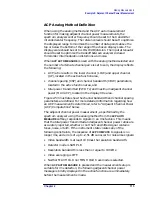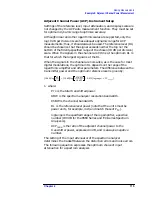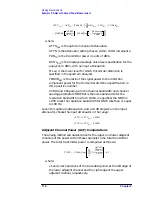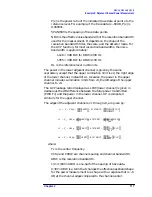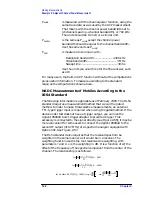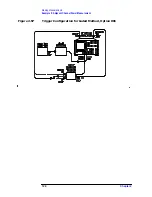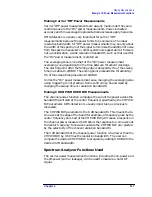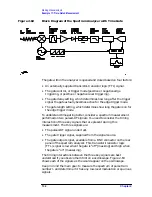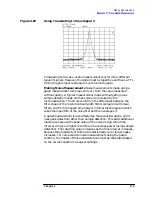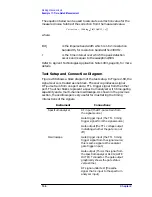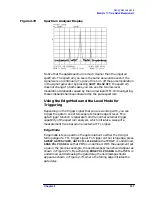
126
Chapter 2
Making Measurements
Example 10: Power Measurement Functions
• The resolution bandwidth may not exceed 100 kHz in the 8560
E-Series and EC-Series spectrum analyzers. A wider resolution
bandwidth would cause the video filtering problem mentioned above
because the internal video bandwidth in the SAMPLE detection
mode is limited by the analyzer hardware to about 450 kHz. At 4.5
times the resolution bandwidth, noise power is underestimated by
0.02 dB.
• Video averaging and other display functions such as MAX HOLD
must be turned off. Video averaging, like video bandwidth filtering,
averages the log of the signal before RMS detection, biasing
noise-like signals.
It is not necessary to be concerned about power detection in all cases. In
occupied bandwidth measurements, which are ratiometric, power
detection is only necessary if the signals beyond the edge of the
occupied bandwidth have different statistical parameters from those in
the center (ie. for those with tones in the center and noise at the edges).
In channel power measurements, power detection is only necessary if
significant amounts of the power are noise-like signals; if all signals are
CW-like, power detection is unnecessary. In carrier power
measurements, the "On" power usually acts like a constant power
because the phase is modulated, not the amplitude. So power detection
is not required. But if the "On" power shows considerable modulation,
such as with a QAM signal, power detection is necessary. The "Off"
power is usually noise-like, thus requiring power detection.
Making Carrier "On" Power Measurements
The carrier power measurement computes the average power during
the time that a burst is on. The result will be accurate if the power
indicated is accurate, and if the time over which it is averaged is
representative.
In order for the indicated power to be accurate, the resolution
bandwidth must be much wider than the spectrum of the signal while
the burst is on. The spectrum for most burst signals is about as wide as
the symbol rate; a resolution bandwidth greater than 3 times this rate
is recommended. The recommended video bandwidth is at least twice
the symbol rate.
The time over which the power is averaged depends on the time
between the rising and falling transitions. The threshold is 20 dB below
the peak level. The averaging zone is moved in from these thresholds by
1% of the sweep time plus the reciprocal of the resolution bandwidth
(1/RBW).
If this automatic choice of the averaging zone is undesirable, it may be
possible to fill in the screen with the section of the burst of interest. Use
the desired averaging time as the sweep time, and set up the desired
video trigger (or other trigger) source and delay.
Summary of Contents for 8560E
Page 21: ...21 1 Quick Start Guide ...
Page 48: ...48 Chapter1 Quick Start Guide Manuals Available Separately ...
Page 49: ...49 2 Making Measurements ...
Page 164: ...164 Chapter2 Making Measurements Example 13 Making Pulsed RF Measurements ...
Page 165: ...165 3 Softkey Menus ...
Page 182: ...182 Chapter3 Softkey Menus Menu Trees ...
Page 183: ...183 4 Key Function Descriptions ...
Page 228: ...228 Chapter4 Key Function Descriptions Key Descriptions Figure 4 3 CRT Alignment Pattern ...
Page 289: ...289 5 Programming ...
Page 323: ...Chapter 5 323 Programming Math Functions Figure 5 10 Display Units ...
Page 339: ...339 6 Programming Command Cross Reference ...
Page 369: ...369 7 Language Reference ...
Page 654: ...654 Chapter7 Language Reference VTL Video Trigger Level ...
Page 655: ...655 8 Options and Accessories ...
Page 665: ...665 9 If You Have a Problem ...
Page 674: ...674 Chapter9 If You Have a Problem Power Requirements Figure 9 2 AC Power Cables Available ...


